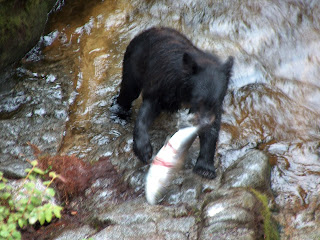 Partially because summer has got me running and partially because I couldn't write it any better than how it has already been written, my post today will mostly be made up of snippets from Wendy Johnson's book, “Gardening at the Dragon's Gate.” Lay Zen teacher Wendy Johnson was the head gardener for twenty five years at Green Gulch garden, a branch of the San Francisco Zen Center. In her decades of experience, gardening has been a primary outlet for her Zen practice.
Partially because summer has got me running and partially because I couldn't write it any better than how it has already been written, my post today will mostly be made up of snippets from Wendy Johnson's book, “Gardening at the Dragon's Gate.” Lay Zen teacher Wendy Johnson was the head gardener for twenty five years at Green Gulch garden, a branch of the San Francisco Zen Center. In her decades of experience, gardening has been a primary outlet for her Zen practice.I admit, I sought after her book with one question in mind, which lead me to skip the first five chapters and go straight to “Chapter 6: Gardening with all Beings,” it's sub-title could be essentially “Zen Pest Management.” I wondered how would someone who dedicated their life to awareness, openness and non-violence approach the pest issue? Like most, when a squirrel insists on eating more of my strawberries then me, I am inclined to find a way to get rid of him. But I know approaching pest problems, like approaching many problems, with single-mindedness and without curiosity will do little to solve it. I have become curious how one could turn a pest from a loathed enemy to at least a relationship of mutual respect. Here I turn to Ms. Johnson:
“Has Zen practice helped me be more peaceful and closely hitched to the vast mind of this pestiferous universe? Hardly. Zen practice deepens my appreciation of paradox and relationship, especially with regard to pests and problems. In the garden Zen practice helps me hold still and look at what is right in front me without turning away. And then it helps me to look again [...] In the safe shelter of the meditation hall I even occasionally see myself as a kind of pest: I plague raccoons and deer, pursue spit bugs and flea beetles, and I plot their demise. I, too, am a kind of invasive creature, an “exotic” in California. Hailing from New England, I have replaced pristine native bogs of wild horsetail and stands of California nettles with row after row of introduced red Russian kale and clove scented stock flowers from Southern Europe.
[...] Unwanted creatures are forever arriving at the garden gate and requiring response. In order to respond to an importuning visitor you must first get out of the way and drop your notions of what your garden is[...] Pledging and promising to meet your garden and all visitors is core to every gardener's life.
[...]In responding to pests and disease in your garden, keep in mind the basic teaching of the Buddha that everything changes all the time, combining that with a reminder from the modern naturalist and conservationist John Muir that everything in the universe is hitched to everything else. Follow your affection as you garden and when you meet a pest, eye to complex eye, or shoulder to thorax, consider that this very spit bug doing the backstroke through a froth of expectorated foam may have been you mother lifetimes ago, or from a more rationalist perspective, is your cousin and you share a common parentage. Fold yourself in with the lot of all the shady and noble pests and guests that also love your healthy and diverse garden. Join the party. Your very life and good fortune as a gardener depend on this integrated relationship and on giving up a measure of control in favor of responding to your garden with a playful, observant and wide, pest-integrating mind.” (Excerpt from Gardening at the Dragon's Gate p. 206- 21, Wendy Johnson).
Originally posted on growfoodfeedspirit.blogspot.com














 Women gathered seeds, roots, wild berries, acorns, wild grapes, strawberries, wild onions and prickly pear in finely woven baskets. The Pauma and other Luiseño peoples are world renown for their expertise in coiled baskets made from the flora of the region.
Women gathered seeds, roots, wild berries, acorns, wild grapes, strawberries, wild onions and prickly pear in finely woven baskets. The Pauma and other Luiseño peoples are world renown for their expertise in coiled baskets made from the flora of the region.